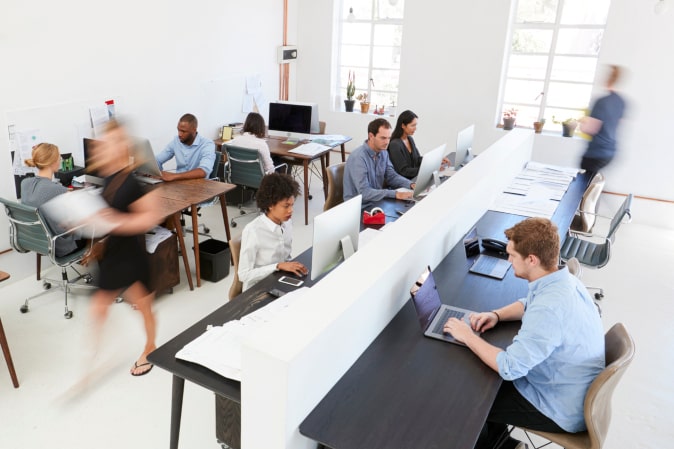
8 ways to increase productivity through office design
How productive are your team? While there may be several reasons why employees are in a slump, one of the most overlooked reasons is the office itself. An uninspiring, poorly laid out business premises isn’t great for morale (or motivation) – but the good news is, it’s incredibly easy to make a few design tweaks to set things right.
With that in mind, here are some great tips for boosting productivity by redesigning your workspace.
Redesigning for A Better Functioning Business
Clearly designed zones
It’s good to have a sense of clarity when it comes to designated areas of the office. For example, is there a place where colleagues can get together to have a casual meeting, to talk through their ideas? Is there a formal meeting zone (if applicable)? Can employees escape the noise of the office and focus on the project without distraction? Think about how you can sub-divide the space to create a more effective environment to work in.
Room to move
Several studies have shown that when employees are able to move around at work, they work better. This doesn’t mean investing in gym equipment (though of course, you can if you want). But it does mean giving your team room to be mobile if they wish to. Likewise, standing desks can make a big improvement.
Vibrant décor
If your office is looking dated and uncared-for, this is going to have a knock-on effect on your team; bringing enthusiasm down. After all, if it appears that you can’t be bothered to care for the office space, why should your team feel any differently about the business as a whole? Even a fresh lick of paint and some new wall decals can make a world of difference.
Better desk spaces
Employees get quite territorial over their desks, and rightly so – this is where they spend much of their working day. As such, it’s important to let them have a level of freedom over the design of their personal area. Offer to supply them with items that improve organisation and wellbeing; such as a filing system, an ergonomic keyboard or even a potted plant or two. It’s the little details that can make a really big difference.
The right colour palette
Obviously, your branding is going to dictate (to an extent) what colours you use to decorate your office space. However, wherever possible, bear in mind the impact that colour has on employees. For example, red has been shown to make people feel more energetic, but also more stressed. Green, by contrast, is a more relaxing colour – but you might not want your team feeling too laid-back while working!
Good lighting
If you’ve got an office that offers lots of natural light, that’s brilliant; make sure you capitalise on it as much as possible, by not blocking the windows with heavy blinds or drapes. If natural light is limited, you might have to be a bit more creative. Glaring florescent bulbs can make workers feel drained; floor and desk lamps tend to create a better working ambience.



